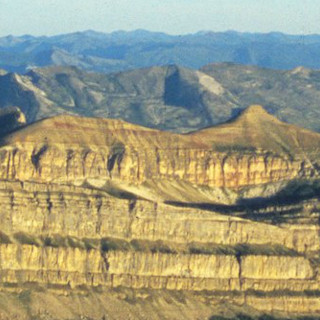Grizzly Bears: Predicted Space Use & Connectivity Pathways
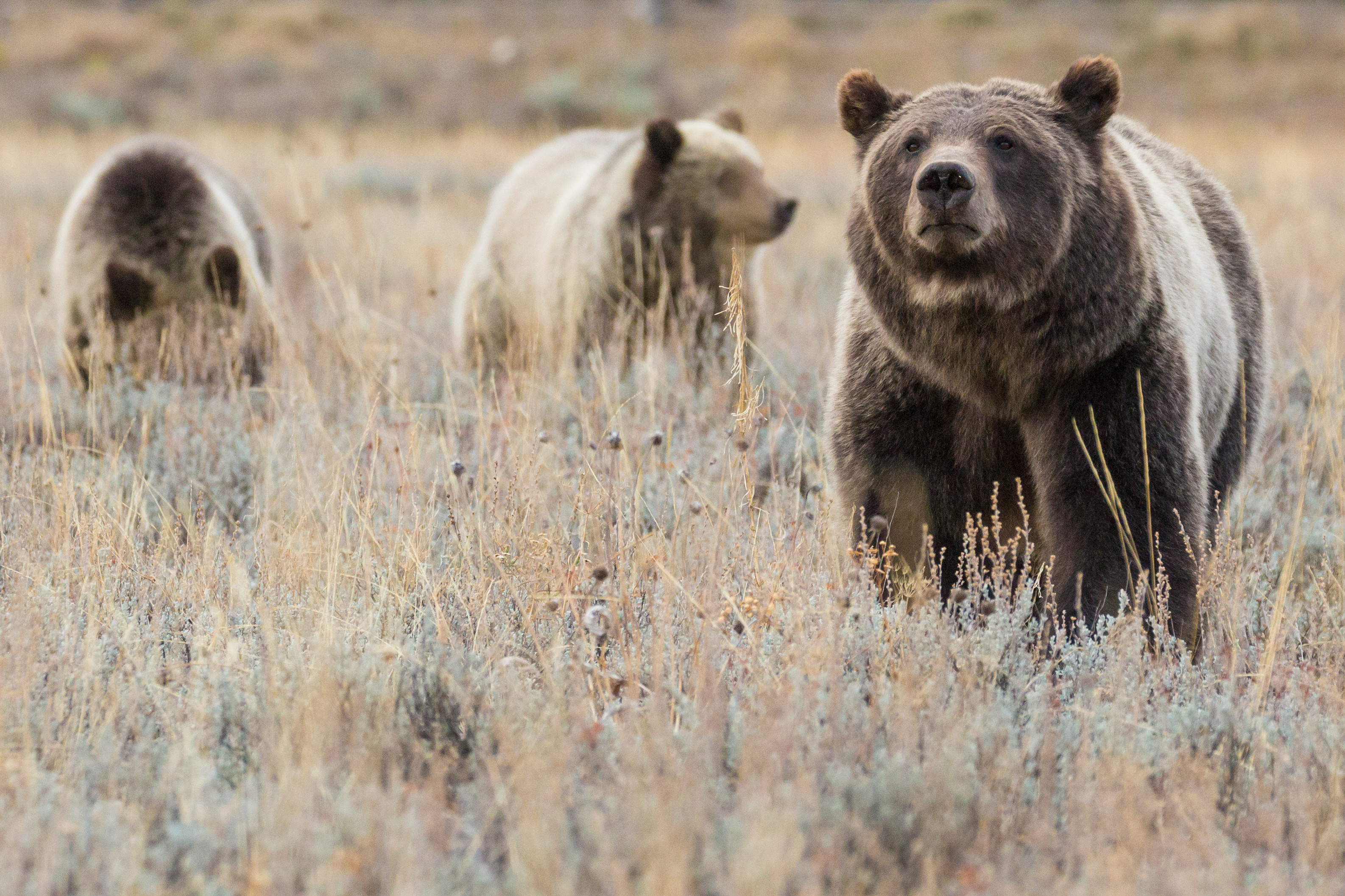
Grizzly bears were nearly extirpated across the western United States in recent centuries. Today, 4 populations are recovering thanks to legal protections and intensive conservation efforts. Population estimates exceed 1000 bears each in the Northern Continental Divide Ecosystem (NCDE) and Greater Yellowstone Ecosystem (GYE). The Selkirk (SE) and Cabinet-Yaak (CYE) Ecosystems have 4-5 dozen bears each. To date, the Bitterroot (BE) and North Cascade (NCE) Ecosystems lack any known permanent residents.
Map: grizzly bear recovery ecosystems and approximate populations sizes.
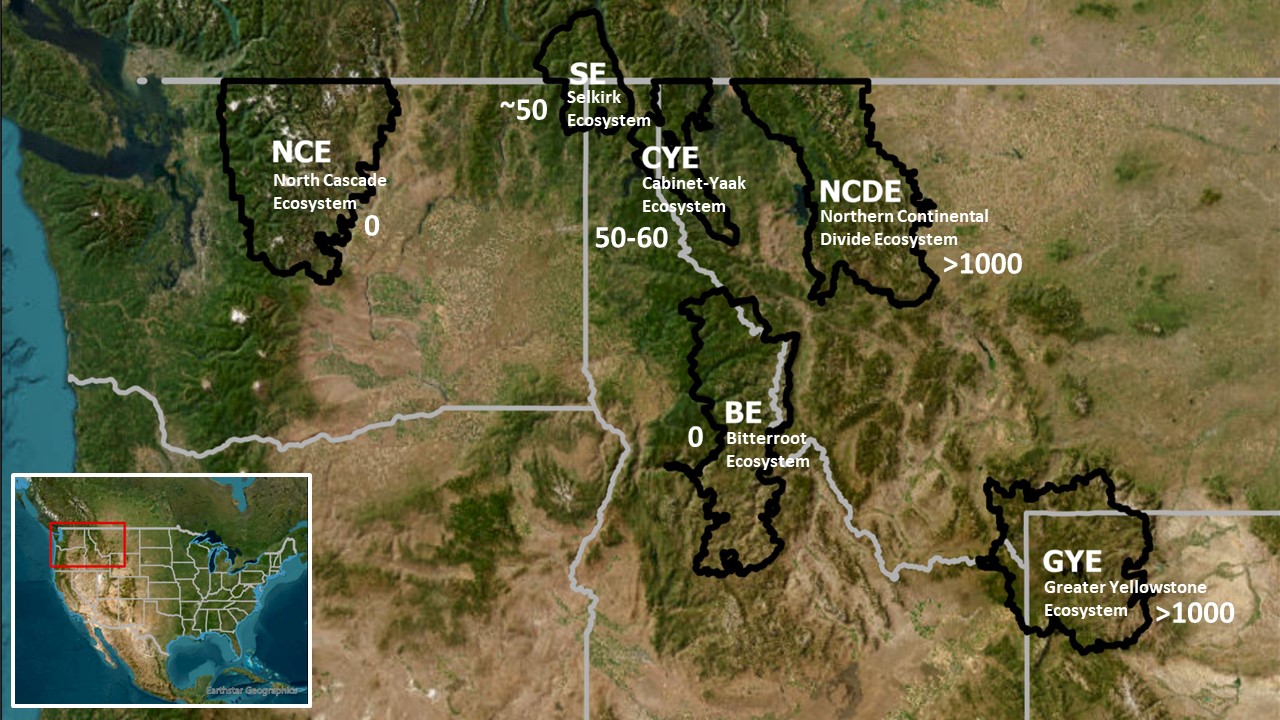
Connectivity between populations is a conservation goal, as is establishment of populations in currently unoccupied recovery areas. This requires a better understanding of habitat selection within existing populations and ability to predict connectivity pathways among ecosystems. We developed a multi-phase approach to study grizzly bear movement, habitat use, and population connectivity.
Process Diagram: our multi-phase approach to investigate grizzly bear habitat use and population connectivity.
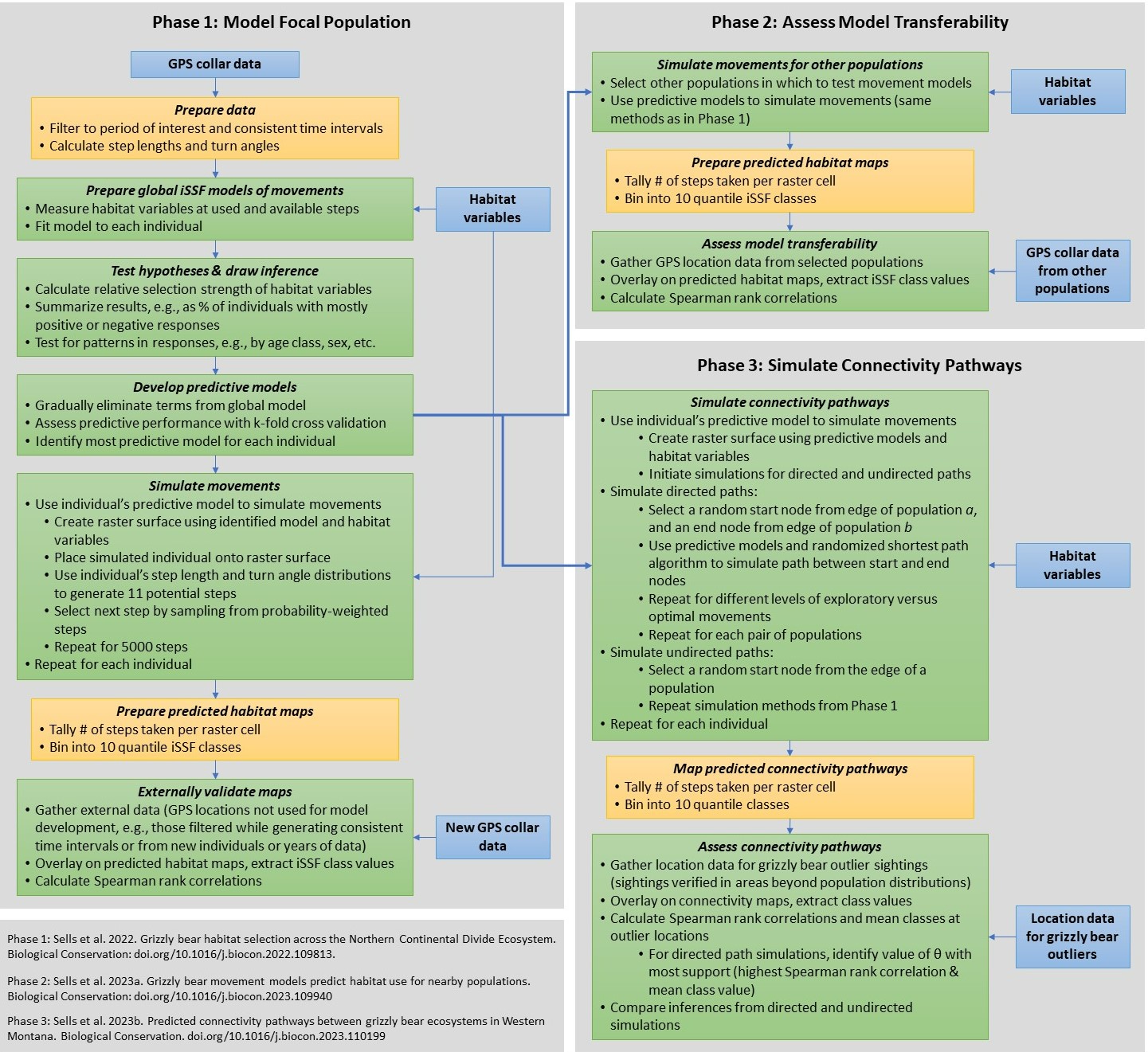
Phase 1: Model Focal Population
Using GPS collar data collected from 67 bears in the NCDE from 2003—2021, we developed integrated step selection functions (iSSFs) for each bear to model their movements. We then used these iSSFs to simulate habitat use within the NCDE.
Our simulation results predict habitat use in the NCDE. Below, maps depict predicted habitat use (iSSF class 1 = low relative predicted use, 10 = high). Each class is represented by 10% of the mapped area. The associated pie charts reveal our external validation of the habitat maps, based on >375,000 fixes for 262 grizzly bears wearing GPS collars, 2003—2021. Pie chart values are percentages of fixes in each iSSF class (1-10). More fixes in higher classes indicate the maps predict habitat use. For example, >25% of all female locations occur in just the blue mapped area (10% of the map), and the top 5 classes (6 – 10) contain >73% of all female locations.
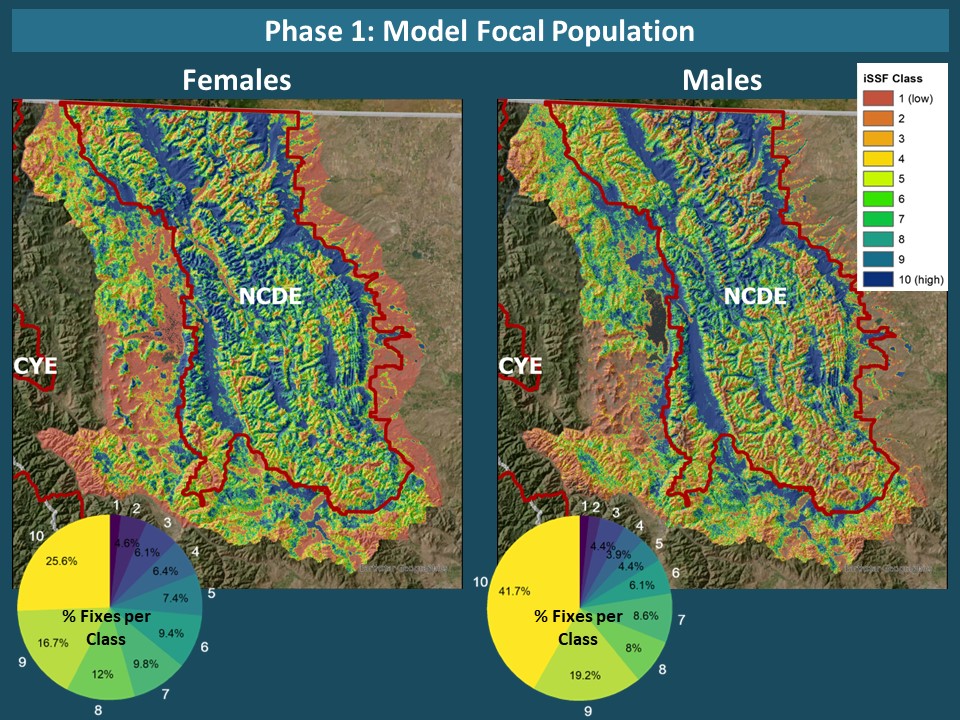
Phase 2: Assess Model Transferability
We next used our iSSFs from Phase 1 to simulate habitat use for the SE, CYE, and GYE. GPS collar data for bears in these populations demonstrate transferability.
The maps below depict predicted habitat use for SE/CYE & GYE grizzly bears. Similar to Phase 1, pie charts depict results of external validation of the habitat maps, based on >106,000 grizzly bear fixes for 72 individuals (SE/CYE) and >526,000 fixes for 166 individuals (GYE) wearing GPS collars, 2010—2021. Values are percentages of fixes in each iSSF class (1-10).
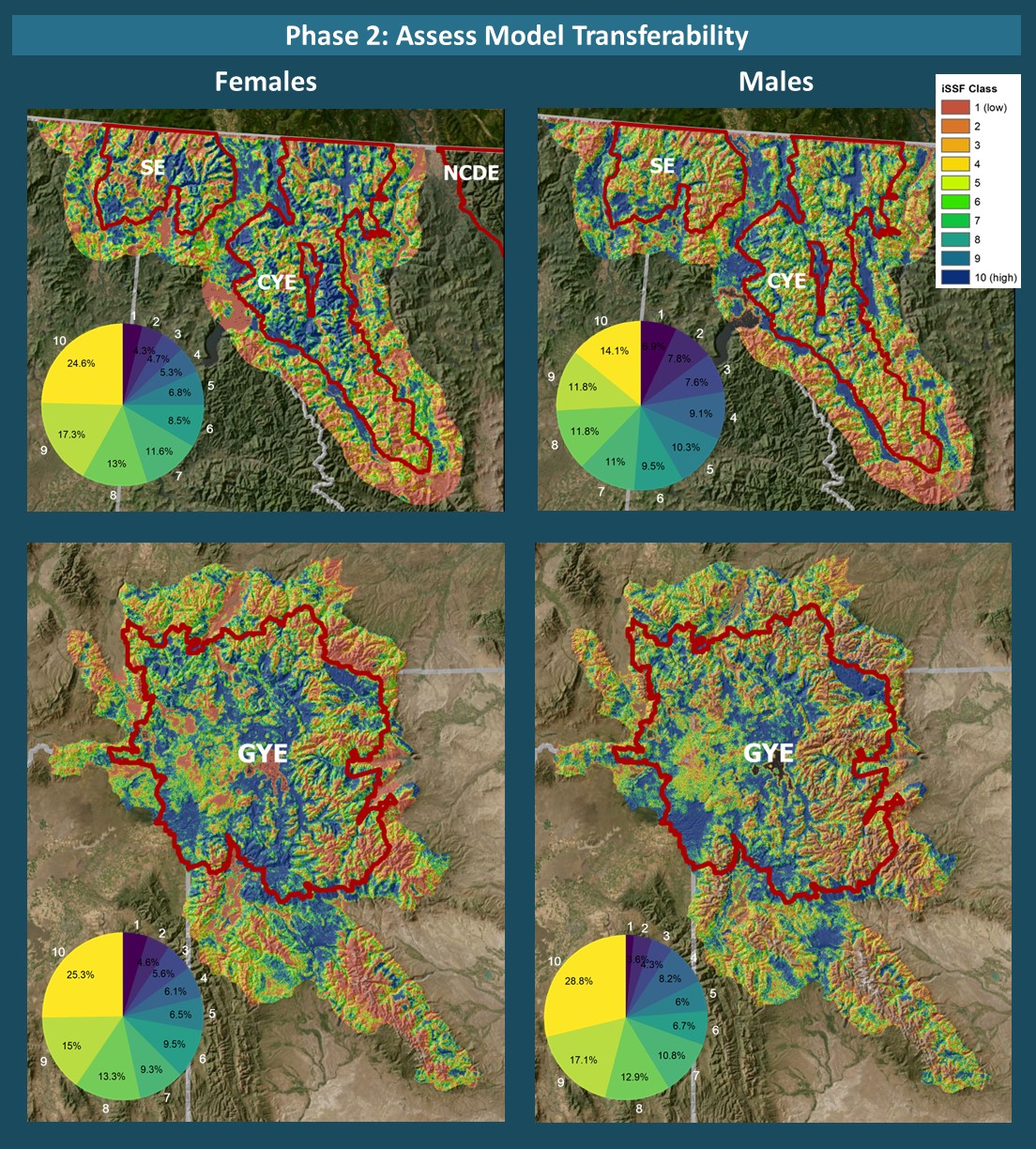
Phase 3: Simulate Connectivity Pathways
We next used our iSSFs to simulate connectivity pathways. Our directed simulations provided simulated bears with a start point and an end point in an adjacent population. In contrast, our undirected simulations provided simulated bears with only a start point (no predetermined end point). Known grizzly bear outliers aligned well with predicted connectivity pathways.
The maps below depict predicted connectivity pathways for grizzly bears. Predictions were based on directed movements (top row; simulations using start and end nodes between ecosystems) or undirected movements (bottom row; simulations using start nodes associated with the NCDE, CYE, and GYE). Verified grizzly bear outlier locations are shown as red stars.
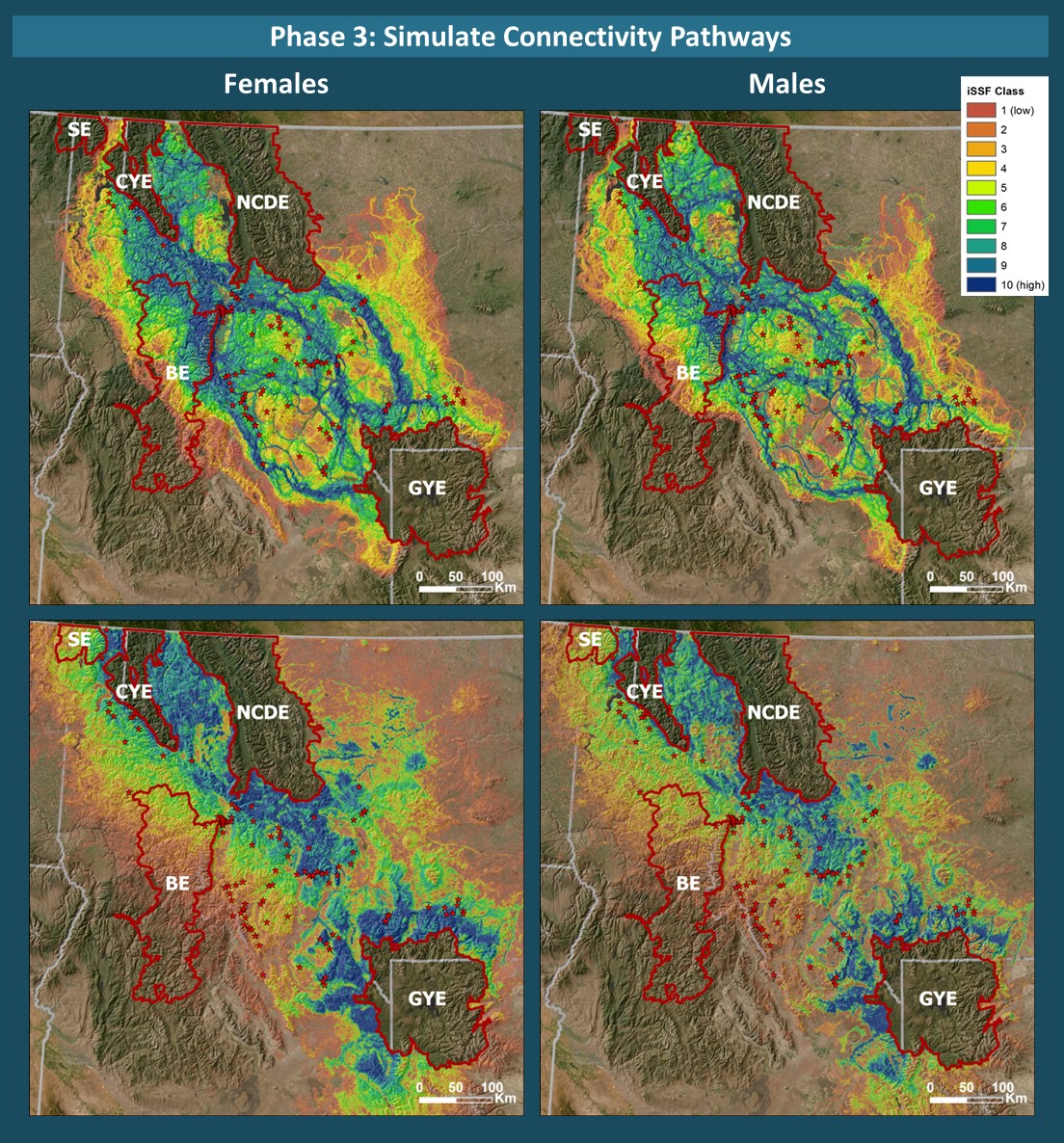
Learn More
Phase 1: Sells et al. 2022. Grizzly bear habitat selection across the Northern Continental Divide Ecosystem. Biological Conservation
Phase 2: Sells et al. 2023. Grizzly bear movement models predict habitat use for nearby populations. Biological Conservation
Phase 3: Sells et al. 2023. Predicted connectivity pathways between grizzly bear ecosystems in Western Montana. Biological Conservation
Data available at United States Geological Survey website
